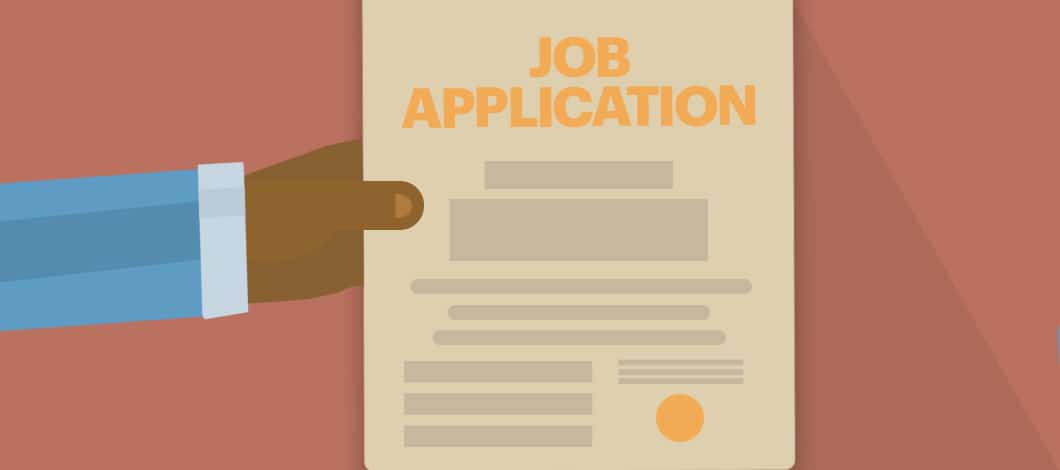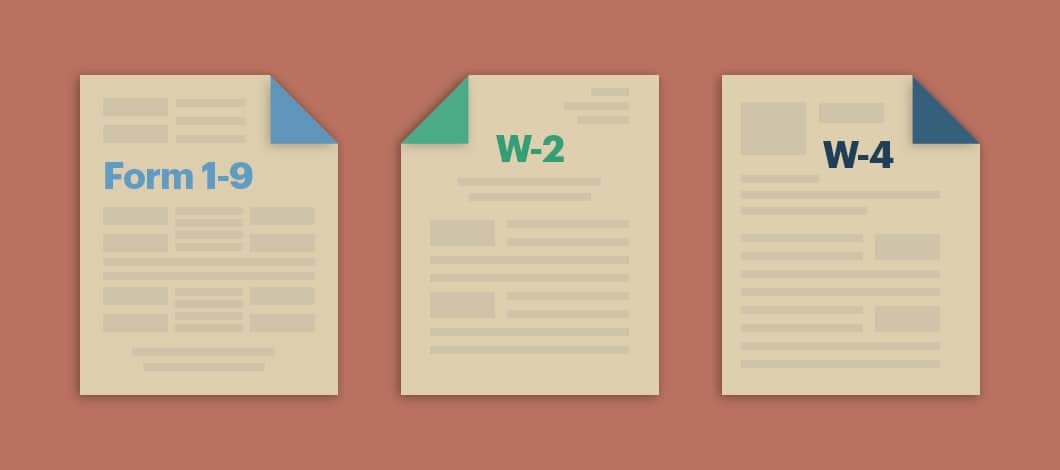Having a checklist of new employee forms helps optimize your onboarding process.
Here’s our list of which forms you need and where to get them, along with some tips to help you get forms completed faster.
What Forms Do New Employees Need to Fill Out?
Before we get into details for specific forms, here’s an overview of essential forms for new employees to fill out:
- Job application form
- Offer letter
- Employee agreement
- Employee handbook acknowledgment
- Additional policy acknowledgments
- Emergency contact information
- Direct deposit authorization
- Benefits information
- Federal Form I-9
- Federal Form W-4
- Federal Form W-2
- State tax forms
- State new hire reporting
Items at the top of this list represent employment documents you should maintain internally and may be required to produce in certain legal situations. Toward the middle are items you need for administering payroll and benefits. The remaining ones represent essential new employee tax forms and other forms required by federal and state government agencies.
Depending on the specifics of your business, you may require other forms, in which case these should be added to your checklist. For instance, some companies may require new hires to sign a nondisclosure agreement.
Forms from government agencies can be obtained from those agencies or their websites. Other forms can be created from scratch, built from templates or custom-designed by a business lawyer.
Job Application Form
A job application collects important information you need to complete the hiring process, some of which you must maintain to comply with Fair Labor Standards Act (FLSA) recordkeeping requirements. An application also can provide you with legal protection to avoid or win a lawsuit. For instance, if you face hiring discrimination allegations, having a job application on file can help you document why you didn’t hire a candidate.
Online sources such as Microsoft Office provide free employment application templates. Use these to design your own, or have an attorney design one for you.
The FLSA requires records used as a basis for wages to be kept for 2 years, while payroll records must be kept 3 years. You may be required to produce records after an employee is no longer working for you, so these time frames should start after the employee leaves. Bear this in mind with other onboarding forms discussed below where this regulation is applicable.

Offer Letter
While not required legally, an offer letter helps document important details about hiring agreements.
These can include:
- What type of position you offered
- Whether the offer was for a full-time or part-time position
- Whether the position is hourly or salaried
- Compensation terms
- Benefits
- Start date
While an offer letter can protect you legally, it can also impose legal obligations on you, so if you use one, make sure it is worded correctly. The Society for Human Resource Management (SHRM), an organization serving human resource professionals, provides guidance on how to construct an offer letter. SHRM recommends that an attorney should review your letter.
Employee Agreement
As with offer letters, written employee agreements aren’t mandatory legally. However, they document contractual agreements with employees, making them important legally if you do use them.
For example, they can be useful if you want to document how much notice you require employees to give you before calling in sick, scheduling a vacation or taking a position elsewhere.
Employee agreements can be constructed from online templates, such as those provided by legal form provider Legal Templates. Having a lawyer review your agreement language is advisable.
Employee Handbook Acknowledgment
No federal law requires you to create a written employee handbook as one of your new hire documents. However, a handbook can be useful for a number of reasons.
For example, the U.S. Equal Employment Opportunity Commission (EEOC) requires employers to notify employees of certain rights, which can be incorporated into an employee handbook.
If you use an employee handbook, make sure that it covers all important policies, and have it reviewed by a lawyer. SHRM provides an employee handbook template.
Additional Policy Acknowledgments
Some policies may not be included in your employee handbook. For instance, employees in certain positions may be required to sign nondisclosure agreements, Internet usage agreements or sales commission agreements. If you have a policy agreement not included in your employee handbook, include a new employee information form covering this item in your onboarding checklist.
For most common policy agreements, you can find templates online. A lawyer can help you customize and review your agreement form.
Emergency Contact Information
Emergency contact information protects both your employees and you in the event of a medical emergency or another type of crisis. For example, if an employee has an accident at work and needs to be taken to the hospital, an emergency contact form lets you know which family members need to be notified.
Forms can include contact information for primary and secondary contacts as well as other important information which may be needed in an emergency, such as information about allergies or medication. SHRM provides a new hire employee information form template you can use to collect emergency contact information.
Direct Deposit Authorization
Another important category of records for new hires is payroll forms for employees. If you plan to pay employees by direct deposit, you will need authorization forms.
To implement direct deposit, information collection from employees gets shared with the financial or payroll service provider you’re using to issue payments. Accounting software provider Intuit provides a sample employee direct deposit authorization form.
Benefits Information
Any forms your employees need to fill out for benefits enrollment should be distributed and filled out during your onboarding process. For certain types of benefits, such as health insurance, your provider may supply forms for you. For other types of benefits, you can find templates online from resources such as hiring software provider Workable.

Federal Form I-9
The Department of Homeland Security’s U.S. Citizenship and Immigration Services (USCIS) agency requires that employees and employers jointly fill out a Form I-9 to verify employee identity and eligibility to work in the U.S. You can obtain an I-9 from the USCIS website.
Federal Form W-4
The Internal Revenue Service (IRS) requires employers to have employees fill out a Form W-4 indicating their tax details so that employers know how much tax to withhold. You can obtain a Form W-4 from the IRS website.
Federal Form W-2
W-2 forms are used by employers to document withholdings from employee paychecks when filing taxes.
Strictly speaking, you don’t need to create a new employee W-2 form until you file taxes. However, in order to do this, you will need the employee’s name and Social Security number or other tax identification number, which you can collect during the onboarding process. If desired, you can enter on the employee’s W-2 at that time.
You can obtain a Form W-2 from the IRS website.
State Tax Forms
Your state government may require you to file tax withholding forms. The IRS provides a directory of state revenue sites where you can obtain your state forms.
State New Hire Reporting
The Personal Responsibility and Work Opportunity Reconciliation Act (PRWORA) requires employers to report new hires to state agencies in order to support the efforts of the Office of Child Support Enforcement (OCSE). Requirements vary by state.
You can obtain state new hire reporting information for individual states from the website of the U.S. Department of Health and Human Services (HSS). If you have employees in multiple states, the HSS provides a Multistate Employer Registry (MSER).
When Should New Employees Fill Forms Out?
Most of the forms covered here should be filled out during or immediately after the hiring process. For forms involving benefits selection, new employees may be allowed a designated enrollment period before choosing their options, typically 30 days.
The most efficient way to complete new employee forms is to combine a form checklist with onboarding software which automates the form completion process.
Leading onboarding software providers for small businesses include Paylocity, Trainual and BambooHR.
Use a New Hire Checklist to Optimize Your Onboarding Process
A checklist of essential new hire forms includes records you should maintain internally, documents necessary to administer payroll and benefits and forms required by federal and state government agencies.
Some of these forms can be obtained from government agencies and websites, while others can be created from a template or with the help of a business lawyer.
Using a checklist of forms can help you streamline your onboarding process, saving you time and labor and ensuring that you don’t overlook any important items. For maximum efficiency, use onboarding software to standardize your form collection and completion process.










